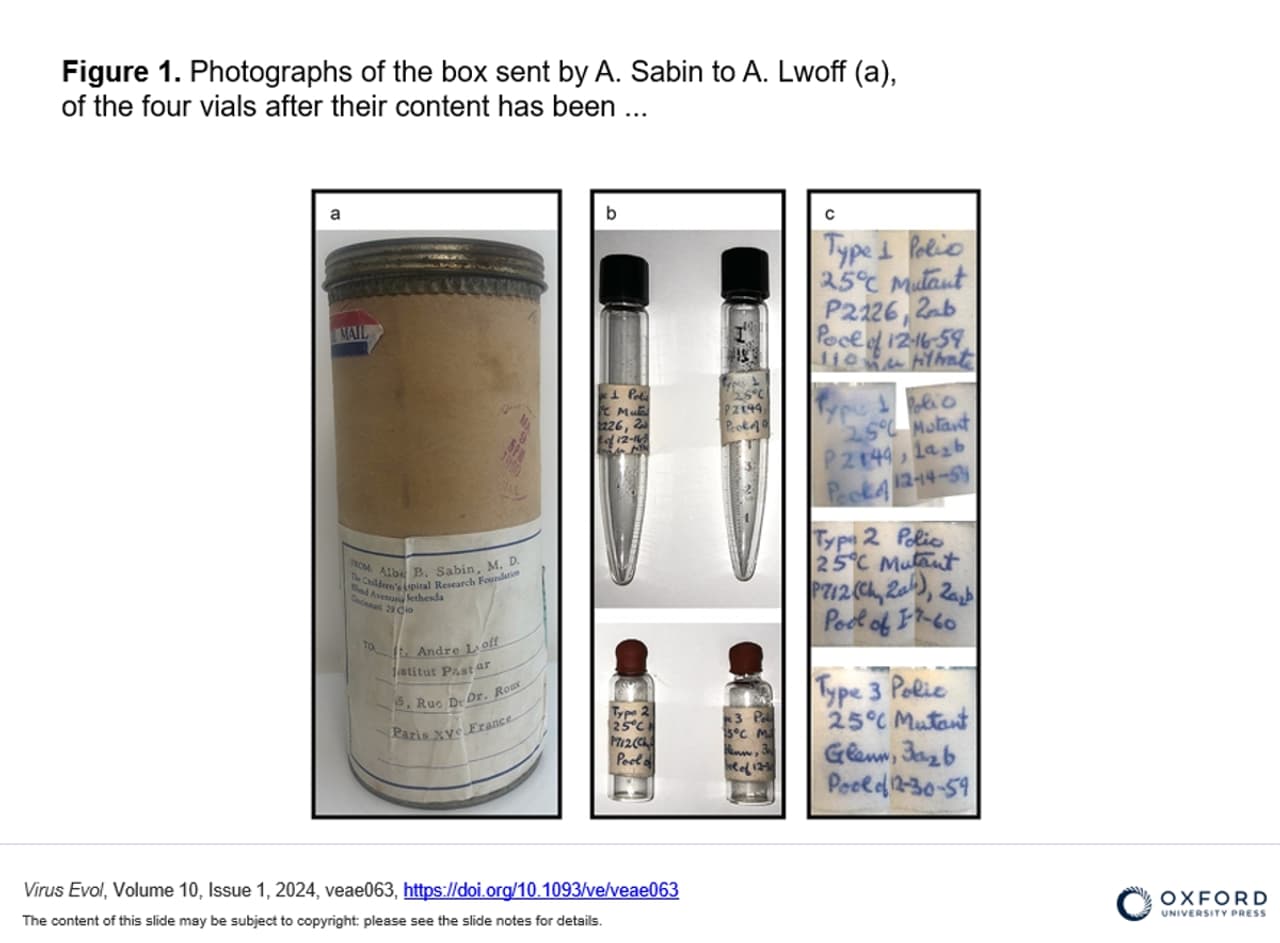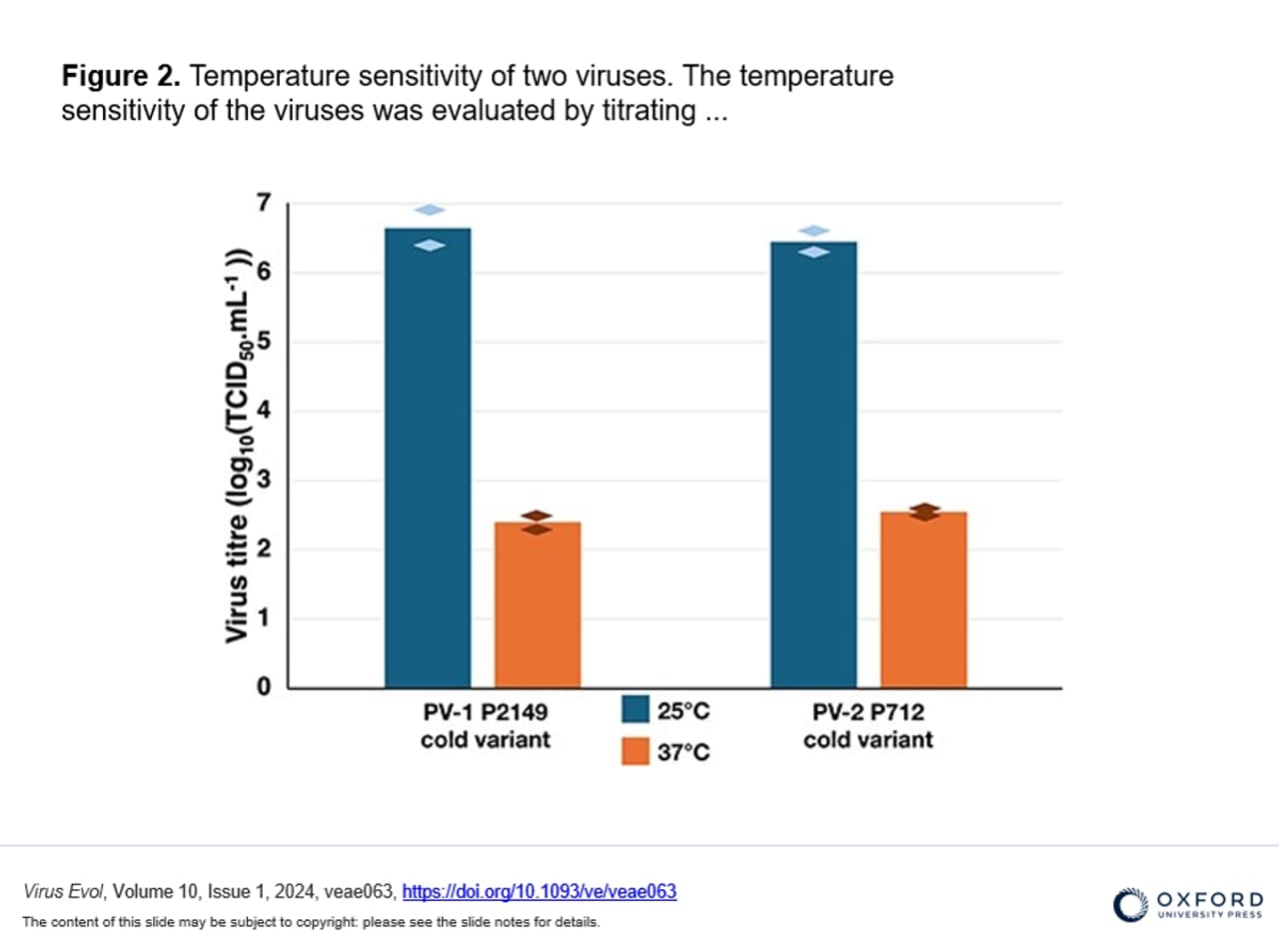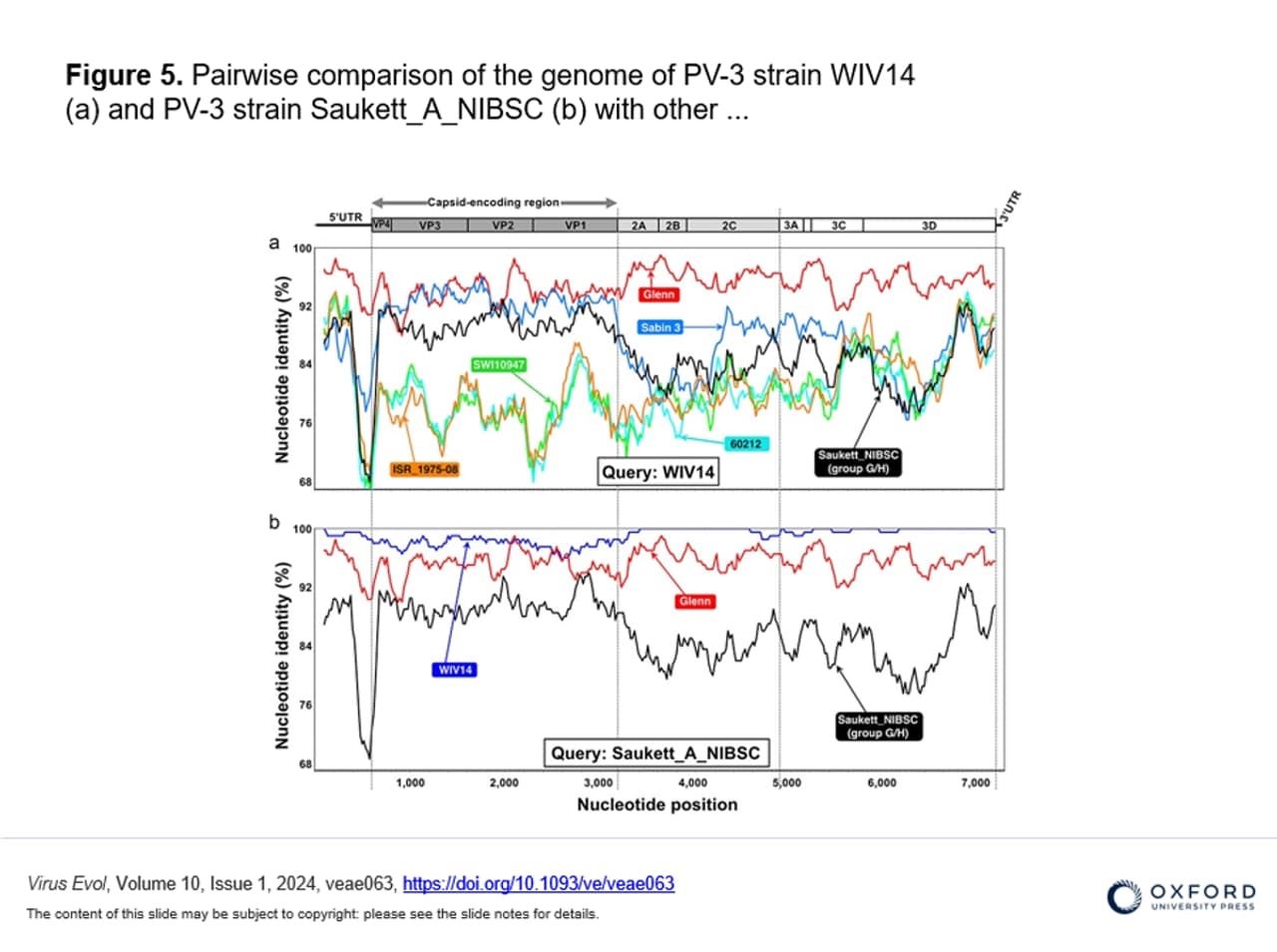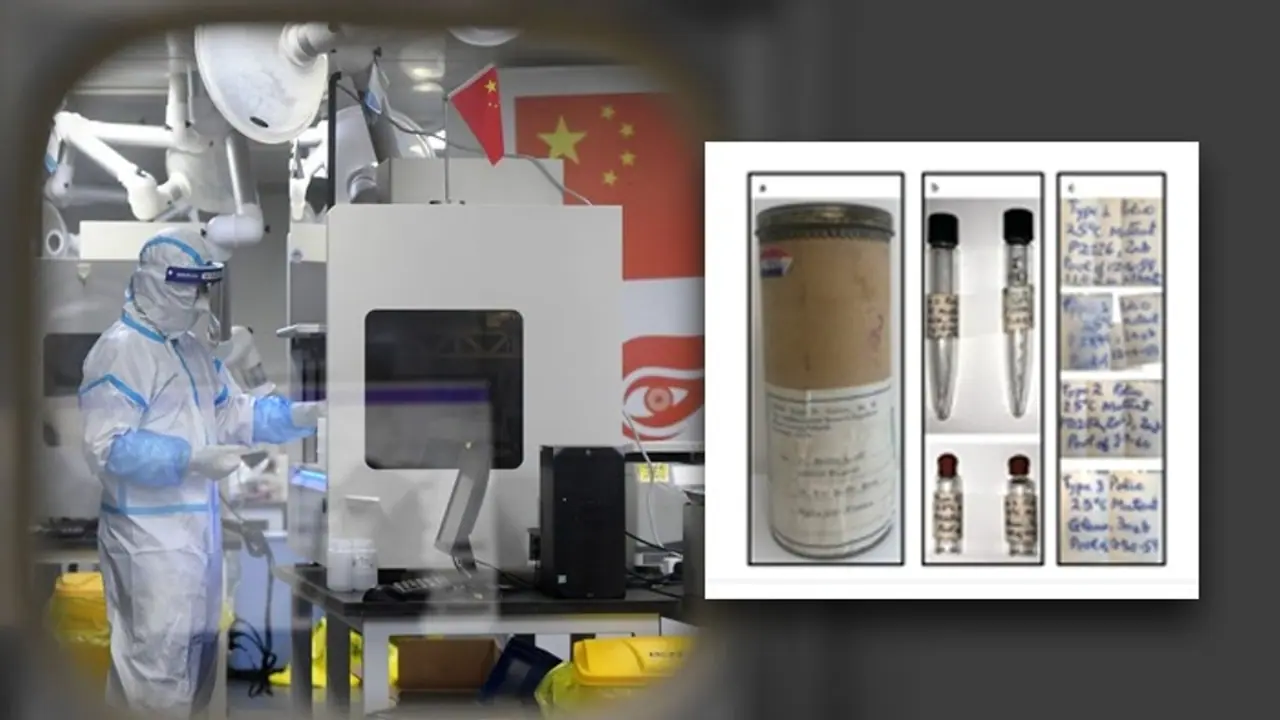A groundbreaking new study has suggested that a highly evolved strain of polio, which infected a four-year-old boy during a viral outbreak in China's Anhui province in 2014, may have originated from the Wuhan Institute of Virology (WIV).
A groundbreaking new study has suggested that a highly evolved strain of polio, which infected a four-year-old boy during a viral outbreak in China's Anhui province in 2014, may have originated from the Wuhan Institute of Virology (WIV). The research, conducted by the Pasteur Institute in France, found that this strain, dubbed "WIV14," is "99 percent" genetically identical to a polio variant stored at the infamous Wuhan laboratory, located just 200 miles from Anhui. This revelation has once again raised alarms about the safety protocols at the Chinese lab already under intense scrutiny for its suspected role in the COVID-19 pandemic.

Mysterious polio strain discovered
The study's findings center around the strain WIV14, first identified in a stool sample from the infected child in 2014. The child had been diagnosed amid an outbreak of "hand, foot, and mouth" disease in the region. Though polio and the virus causing the outbreak are both enteroviruses, sharing similarities in their infection pathways, the detection of WIV14 in the boy came as a shock to researchers. Genetic analysis revealed the WIV14 strain had startlingly high similarities to the "Saukett A" strain, a polio variant developed in the 1950s and used extensively for vaccine production in laboratories.

(Photographs of the box sent by A. Sabin to A. Lwoff (a), of the four vials after their content has been transferred into other tubes (b), and of the vial labels (c). Credit: Virus Evolution)
Wuhan lab under scrutiny
Researchers from the Pasteur Institute cannot conclusively state where the WIV14 strain originated but noted two possible theories that "must be explored." One possibility suggests that the strain leaked from a lab facility, specifically the Wuhan Institute of Virology, where it had been catalogued and stored. Dr. Richard Ebright, a Harvard-trained molecular biologist who was not involved in the study, emphasized that the findings point to significant biosafety concerns in global virology research. He further explained that the proximity of the Wuhan lab, notorious for lax safety protocols, to the site of the polio outbreak in Anhui adds weight to the theory that WIV14 may have leaked from the lab.
If confirmed, this revelation would contribute to the growing criticism of China's state-run infectious disease labs. In 2023, the Biden administration cut US funding to the Wuhan Institute over concerns about safety practices and its potential involvement in the COVID-19 pandemic. Capitol Hill has continued to scrutinize the Chinese lab for its alleged role in the global health crisis.

(Temperature sensitivity of two viruses. The temperature sensitivity of the viruses was evaluated by titrating virus stocks at 25°C and 37°C on RD cells. The mean of two experiments is shown, with diamonds indicating the titre of each replicate. Credit: Virus Evolution)
Comparing strains: Genetic similarities
The Pasteur researchers compared the entire genome of the WIV14 strain with the Saukett A strain, which has been widely used to produce inactivated polio vaccines. They discovered only 70 nucleotide differences between the two, meaning the strains were more than 99 percent identical. This extreme similarity has led researchers to suspect that there have been several undocumented leaks of polio viruses from laboratories over the years.
Wuhan virologists had earlier theorized that the four-year-old boy had contracted a mutated form of Sabin 3, a strain used in oral polio vaccines. However, the Pasteur Institute team vehemently rejected this hypothesis. Their research found WIV14 and Sabin 3 to be significantly different across vast regions of their genomes, unlike the much closer relationship between WIV14 and Saukett A. The Pasteur researchers concluded that the Wuhan group's explanation was "improbable."
Two plausible theories
Dr. Maël Bessaud, who leads the Pasteur Institute’s center for tracking polioviruses, and his team outlined two potential origins for the WIV14 strain. The first theory posits that the strain could have been a result of cross-contamination at the Wuhan lab, causing a false positive for a new polio strain in the four-year-old boy's sample. In this case, WIV14 would have been a slightly mutated version of the Saukett A strain, leaked from the Wuhan facility.
The second theory suggests that the child may have genuinely been infected by WIV14, which could have emerged from a facility or a natural reservoir where it had lain dormant for decades. If true, this would mean that the lab release did not necessarily happen at the Wuhan Institute but could have occurred at another location in China.

(Pairwise comparison of the genome of PV-3 strain WIV14 (a) and PV-3 strain Saukett_A_NIBSC (b) with other PV-3 strains: Sabin 3, Saukett_NIBSC, 60 212, ISR_1975-08, SWI10947 (GenBank accession number AY184221, KP247597, FJ842158, OP137288, and FJ914252, respectively. Credit: Virus Evolution)
Implications for global biosafety
Regardless of which hypothesis proves true, the study highlights the broader issue of biosafety in medical and research laboratories worldwide. Dr. Ebright argued that the findings underscore the "startlingly high frequency of virology-research incidents" that pose significant public health risks. He called for stricter national and international oversight of biosafety, biosecurity, and risk management protocols.
The handling of deadly viruses and pathogens, such as polio, has come under increased scrutiny in recent years. Polio, once a global scourge, has been largely eradicated through vaccination efforts. However, the virus has resurfaced in conflict zones such as Gaza, Afghanistan, and Pakistan, as well as in unexpected areas like the United States, where it was detected in sewage samples in New York over 70 times in 2022.
A global concern
The possibility of a lab leak involving a highly evolved strain of polio echoes the fears surrounding the COVID-19 pandemic and the suspected role of the Wuhan Institute of Virology in its origin. As with COVID-19, the question of whether a lab accident could have unleashed a deadly pathogen into the population continues to stir debate. The Pasteur Institute's study calls for further investigation into the origins of WIV14 and emphasizes the need for vigilance in regulating virology research on a global scale.
With the world still grappling with the aftershocks of the pandemic, the potential of another virus escaping from a lab highlights the critical need for enhanced biosafety measures. Dr. Ebright's final assessment of the findings is clear: "Whether through lab contamination or lab release, the situation demands urgent reforms to prevent future public health emergencies."
